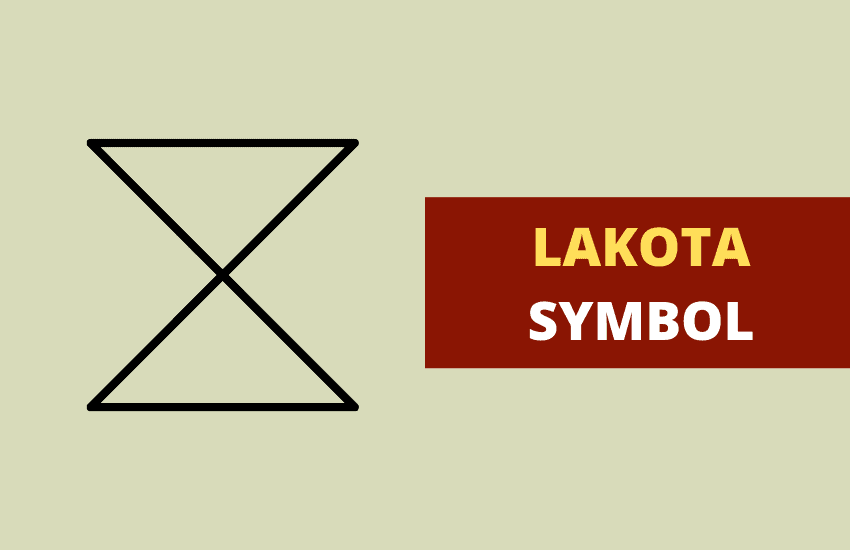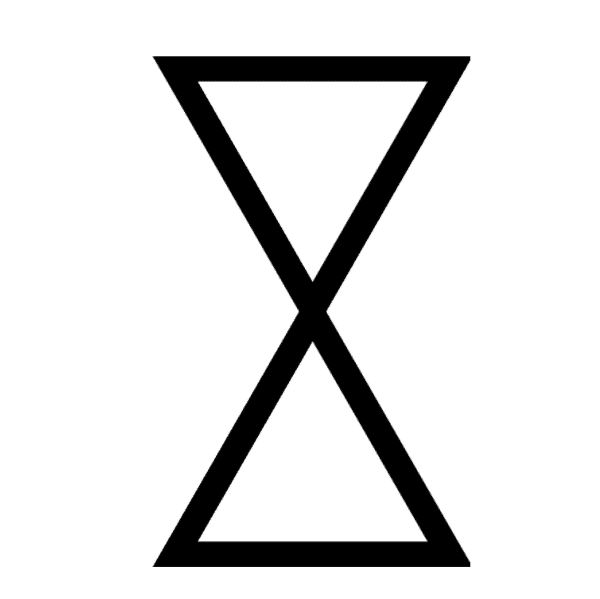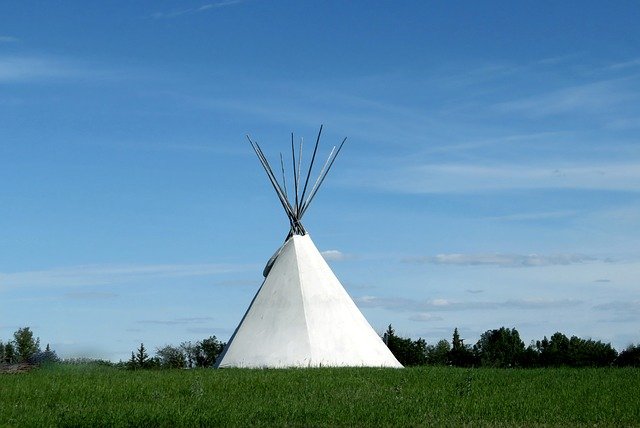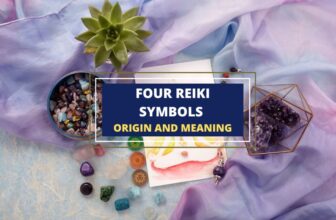
Table of Contents
Recognized for its hourglass form, or two connected triangles—one inverted on top of the other—the Lakota symbol holds great meaning for the indigenous people of North America. Every civilization has created pictographs and stylized figures to represent various philosophies and beliefs. It’s the same with this symbol. Here’s a closer look at the significance of the Lakota symbol.
History of the Lakota Symbol

The term Lakota is a Teton word that means friends or allies. In fact, it’s the name of a Native American tribe who lived in the Great Plains of North America before it was colonized. In the modern day, the said region includes parts of 10 states of the U.S, stretching from Texas to the Canadian Prairies and Northwest Territories.
The Lakota was once the most powerful tribe in the American history, but it was just a subgroup of the Sioux or the Great Sioux Nation, which includes many different tribes including the Dakota and the Nakota. For this reason, the Lakota people are also called Teton Sioux, in which the term Teton is derived from their word Titunwan that means prairie dwellers.

Since they were a nomadic people who moved from one place to another, they used the sun and the stars as a guide. The most recognized symbol they used was the kapemni—a simple hourglass or X-form—though it’s commonly referred by many as the Lakota symbol. The term kapemni means twisting, which is deeply associated with how the tribe understands the stars in the sky.
- The Lakota Symbol and Cartography
Cartography refers to the practice of making maps, and the Lakota people created maps of the earth and constellations. While they didn’t have a system of grids and coordinates, they used oral tradition, petroglyph, as well as the stars and other celestial objects to mark their sacred sites and hunting grounds.
More than that, the Lakota symbol isn’t just a symbol, but actually a star map. They believed that the shape of the earth was similar to a tipi or a cone-shaped tent, while the shape of the star was like an inverted cone.
While the figure itself isn’t recognizable as a star map, it’s said that kapemni isn’t a flat two-dimensional triangle, but two cones with two vortexes joined together. For them, it’s a sort of portal or doorway between the physical and the spiritual worlds. Also, the Lakota symbol represents the concept of earth-sky mirroring—what is below is like what is above.
They also used the Lakota symbol as a sort of a calendar in determining the sun’s location, as well as the times of the year they should be performing ceremonies and rituals in specific places. As the earth moves, the sun’s position in the sky also changes. In fact, their annual pilgrimage even mimicked the sun’s path on earth.
During the spring equinox, the sun crosses the Big Dipper, which appears like the shape of a ladle to the naked eye, giving them the sign that it’s time to travel to their sites. It’s also said that their sites and landscapes were designed to mirror the pattern of stars or constellations above. For the Lakota people, the site Black Elk Peak, found in the center of Black Hills of South Dakota, is also the heart of the earth.
- The Native American Philosophy and the Lakota Symbol
Apart from cosmology, the stars have also played role in the traditions, beliefs and philosophies of the Lakota people. In fact, their culture has been influenced by centuries of observing the heavens. They believe in the spirits of the Sun, Earth, as well as the stars as supernatural beings of the sky. In fact, their philosophy is centered on the Sun and Earth relationship, which is also represented by the Lakota symbol.
For this reason, the symbol has been commonly found in their art, from rock carvings to beadworks, parfleche designs, tipi paintings and emblems. Sometimes, it’s even incorporated in other complex patterns such as thunderbird images, featuring an X-bodied bird figure, as well as on anthropomorphs to represent their philosophy and religion.
- The Lakota Symbol and the Tipi

The triangle ideogram of the Lakota symbol is also evident in their lodging structure, the tipi, which is a cone-shaped tent made of animal skins and wooden poles. It’s said that the Native Americans believed them to be a map of their world, apart from being a shelter to protect them from the wind and the cold.
In fact, the construction of their tipi is similar to the cone-shaped Lakota symbol. These tipis were covered with cured buffalo hide, in which the animal was seen as the representation of the sun. Therefore, living inside the tipi was perceived as living within the sun.
Meaning and Symbolism of the Lakota Symbol
Oftentimes, the simplest abstract symbols such as the Lakota or the kapemni represent complex meanings understood by a few people. Here are some of its symbolic meanings:
- Symbol of Sun and Earth – The Lakota symbol has been used to represent the relationship of the Native Americans with the universe. The lower triangle pointing up symbolizes the earth while the top triangle pointing down symbolizes the stars and the sun.
- “As above, so below” – The kapemni symbol represents the concept of earth-sky mirroring. The philosophy simply states that the earth mirrors the heavens above, and what’s in the stars is also on the earth. For the Lakota people, above represents the spirit world, while below represents the Earth or the physical world.
- A Representation of Prayer – In some scholarly interpretations, it’s associated with prayer from earth going to heavens. It also describes the connection between the Sun and the dancers participating in the Sun Dance ceremony.
Lakota Symbol in the Modern Times
Nowadays, the Lakota people continue some of their ancestral traditions, including the use of the kapemni symbol. Some of them reside around the regions of North and South Dakota, Montana and some parts of Canada, striving to preserve their way of life.
It’s also believed that there are still earth and star maps, but they’re kept secret and rarely shown to others that don’t belong to the tribe. This is because these maps mark some of the Lakota people’s most sacred sites in the Black Hills.
However, the Lakota symbol shouldn’t be confused with the popular extinction symbol—an identical hourglass inside a circle—used by a global environmental movement, known as the Extinction Rebellion or XR, in their protests.
In Brief
It’s fascinating how the Lakota people managed to create maps and utilized a complex symbolic system. Once regarded as a star map, the Lakota symbol itself is a representation of several beliefs and philosophy of the Native American tribe. No wonder it remains a powerful symbol, reflecting their relationship with the universe, along with their culture and religion.








